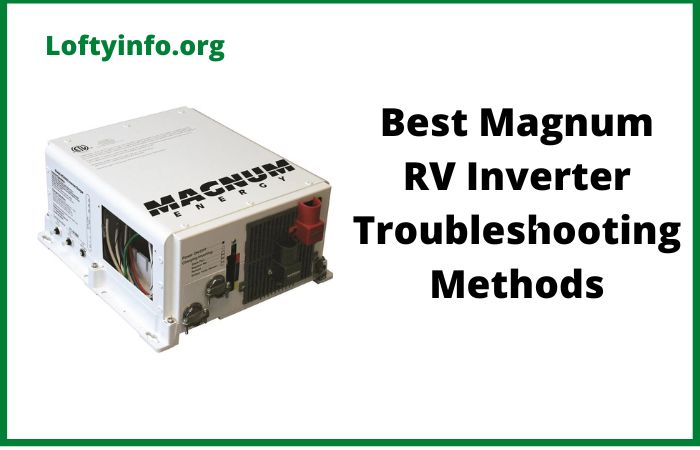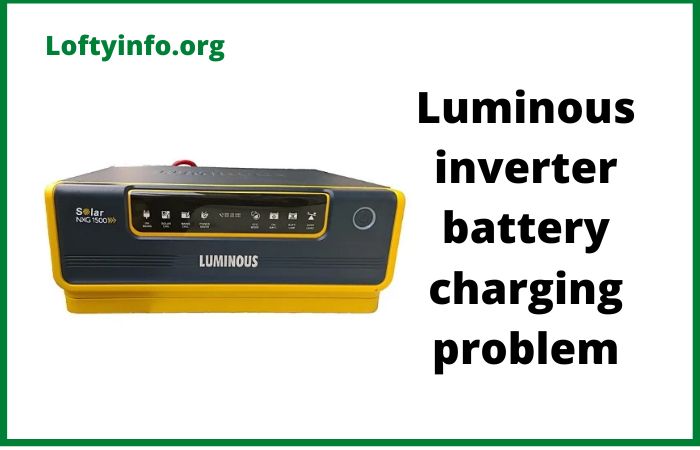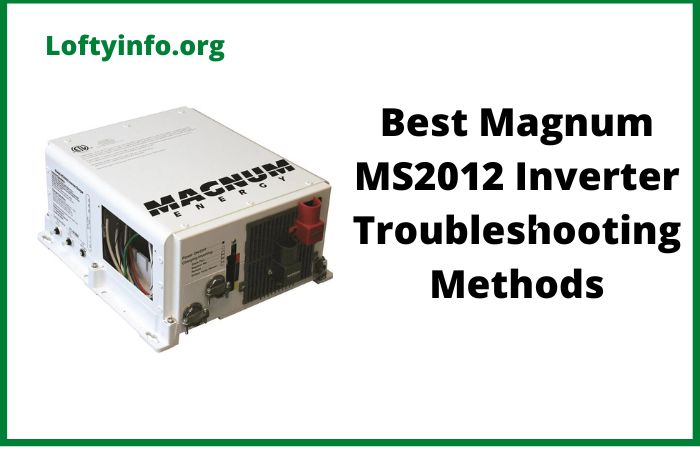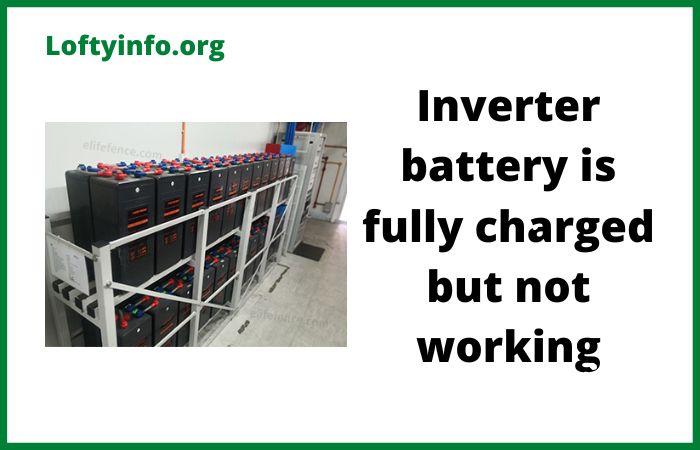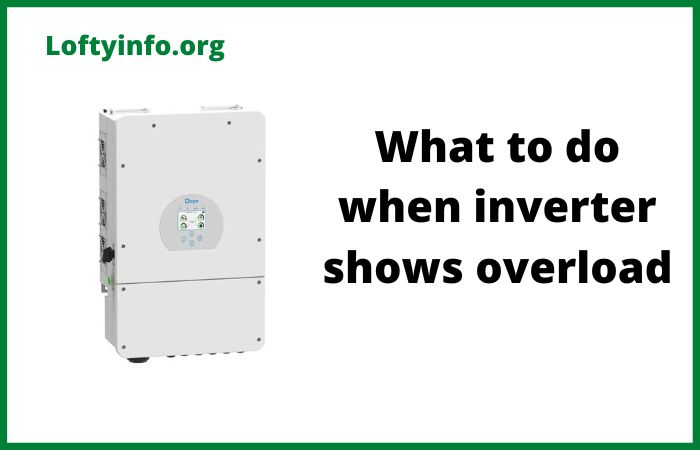Magnum RV Inverter Troubleshooting: 8 Essential Methods Every RV Owner Should Know
When your Magnum RV inverter starts acting up during your camping adventures, it can quickly turn a relaxing trip into a frustrating experience.
As one of the most trusted names in RV power conversion, Magnum inverters are built to last but like any electronic device, they occasionally require troubleshooting.
This comprehensive guide will walk you through eight proven methods to diagnose and resolve common Magnum RV inverter problems, helping you get back to enjoying your off-grid lifestyle.
Understanding Your Magnum RV Inverter Before Troubleshooting
Before diving into troubleshooting techniques, it’s crucial to understand how your Magnum inverter works.
These devices convert 12V DC battery power into 120V AC power, allowing you to run household appliances in your RV.
Magnum inverters come in various models including the MS Series, MSH Series and MMS Series, each with specific features and power ratings.
Common signs that indicate your Magnum inverter needs troubleshooting include no AC output, reduced power output, overheating, unusual noises, error codes on the display or complete system shutdown.
Recognizing these symptoms early can prevent more serious damage and costly repairs.
Best Magnum RV Inverter Troubleshooting Methods
Method 1: Check Battery Voltage and Connections
Why This Method Works: Low battery voltage is the leading cause of Magnum inverter problems. Your inverter requires adequate DC input to function properly.
Start by using a digital multimeter to measure the battery voltage at the inverter’s DC input terminals.
A healthy 12V system should read between 12.6V to 13.8V when fully charged.
If the voltage drops below 10.5V, your Magnum inverter will automatically shut down to protect itself and your batteries.
Examine all DC connections for corrosion, looseness or damage.
Even a slightly loose connection can cause voltage drops under load, leading to inverter malfunctions.
Clean any corroded terminals with a wire brush and baking soda solution then apply dielectric grease to prevent future corrosion.
Pro Tip: Check voltage both at rest and under load.
A battery might show good voltage when not being used but drop significantly when powering your inverter.
If the voltage drops drastically under load, then the battery has really lost its capacity and needs to be replaced.
Method 2: Inspect and Reset Circuit Breakers and Fuses
Why This Method Works: Circuit protection devices are designed to trip when they detect overcurrent conditions, and sometimes they need manual reset.
Locate the DC circuit breaker or fuse between your battery bank and the Magnum inverter.
If the breaker has tripped, you’ll usually see a red indicator or the breaker will be in the middle position.
Reset it by turning it fully off then back on.
For fuses, use a multimeter to check continuity or visually inspect for a blown element.
Don’t forget to check the AC breakers in your RV’s electrical panel.
A tripped AC breaker can make it appear as though your inverter isn’t working when it’s actually functioning normally.
Each AC circuit should be tested individually to isolate any problematic branches.
Important Safety Note: If breakers or fuses repeatedly fail, there’s an underlying problem that needs professional attention.
Never bypass safety devices or use higher-rated fuses than specified.
Method 3: Verify Load Requirements and Power Draw
Why This Method Works: Overloading your Magnum inverter is a common cause of shutdown and reduced performance.
Calculate the total wattage of all devices you’re trying to run simultaneously.
Remember that many appliances have higher starting watts than running watts.
For example, a microwave rated at 1000W running watts might require 1500W starting watts or more depending on the brand.
Your Magnum inverter model determines your available power.
An MS2012 provides 2000W continuous power while smaller models offer less.
Use a clamp meter or power monitor to measure actual current draw.
This real-world measurement often reveals hidden loads like phantom draws from electronics in standby mode.
Reduce your load by unplugging non-essential devices and see if the inverter performance improves.
Load Management Strategy: Prioritize your power needs and avoid running high-draw appliances simultaneously.
Consider upgrading to a larger capacity Magnum inverter if your power needs have grown beyond your current unit’s capabilities.
Method 4: Address Overheating Issues
Why This Method Works: Magnum inverters have built-in thermal protection that shuts down the unit when it gets too hot, preventing permanent damage.
Check that all cooling vents on your Magnum inverter are clean and unobstructed.
Dust, pet hair and debris can block airflow causing overheating.
Use compressed air to blow out accumulated dust from the cooling fins and internal fan areas.
Ensure adequate ventilation around the inverter installation.
Magnum recommends at least 3 inches of clearance on all sides for proper airflow.
If your inverter is mounted in a confined space, consider installing additional ventilation fans or relocating the unit to a more suitable location.
Monitor the ambient temperature in your inverter’s location.
High ambient temperatures especially in enclosed compartments during hot weather can push your inverter beyond its thermal limits even under normal loads.
Method 5: Perform Proper Shutdown and Restart Procedures
Why This Method Works: Like computers, inverters can experience software glitches that a proper restart can resolve.
To properly restart your Magnum inverter, first turn off the inverter using its power switch or remote control.
Wait at least 10 seconds to allow all internal capacitors to discharge.
Disconnect the DC power by opening the DC circuit breaker or removing the DC fuse.
Wait another 30 seconds before reconnecting DC power and turning the inverter back on.
This process clears any temporary faults in the inverter’s control circuits and resets the internal microprocessor.
It’s particularly effective for resolving communication errors with remote panels or clearing nuisance alarms.
Reset Sequence: Some Magnum models have specific reset procedures outlined in their manual.
For example, certain models require holding the power button for a specific duration to initiate a factory reset.
Method 6: Diagnose Using Error Codes and LED Indicators
Why This Method Works: Magnum inverters provide diagnostic information through LED patterns and error codes that pinpoint specific problems.
Consult your Magnum inverter manual to interpret the LED indicator patterns.
Different colored lights and blinking sequences indicate specific conditions:
- Solid green typically means normal operation
- Red lights usually indicate fault conditions
- Blinking patterns provide specific diagnostic information
For models with digital displays, note any error codes that appear. Common Magnum error codes include:
- Code 01: Low battery voltage
- Code 02: High battery voltage
- Code 03: Battery temperature sensor fault
- Code 04: Overload condition
Record the exact error code and sequence, as this information is crucial for proper diagnosis and potential warranty claims.
Method 7: Test and Verify Grounding Systems
Why This Method Works: Proper grounding is essential for safe operation and can affect inverter performance and interference issues.
Check that your Magnum inverter’s chassis is properly grounded to your RV’s frame.
Use a multimeter to verify continuity between the inverter chassis and a known good ground point.
Resistance should be less than 1 ohm for a proper ground connection.
Inspect the AC neutral-to-ground bond in your system.
Some Magnum inverters have internal neutral-ground bonding while others require external bonding depending on your installation type.
Incorrect grounding can cause GFCI outlets to trip unnecessarily or create safety hazards.
Ground Fault Testing: If you’re experiencing GFCI tripping issues, disconnect all AC loads and test each circuit individually to isolate any ground faults in your RV’s wiring system.
Method 8: Update Firmware and Check Remote Control Settings
Why This Method Works: Software updates can resolve bugs and improve compatibility, while incorrect settings can cause operational issues.
Check if your Magnum inverter model supports firmware updates.
Newer models often have updatable firmware that can resolve known issues and improve performance.
Contact Magnum Energy or check their website for available updates specific to your model.
If you’re using a remote control panel like the ME-RC50 or ME-ARC, verify that all settings match your installation requirements.
Common settings to check include:
- Battery type (AGM, Gel, Lithium, etc.)
- Low voltage disconnect points
- High voltage disconnect points
- Search mode sensitivity
- Shore power transfer settings
Remote Panel Troubleshooting: If your remote isn’t communicating with the inverter, check the communication cable connections and try resetting both the inverter and remote panel.
When to Seek Professional Help
While these troubleshooting methods resolve most common Magnum RV inverter issues, some problems require professional diagnosis and repair.
Contact a certified Magnum dealer or RV technician if you encounter:
- Persistent error codes after trying all troubleshooting steps
- Physical damage to the inverter case or components
- Electrical smells or burning odors
- Repeated component failures
- Issues that could void your warranty
Preventive Maintenance Tips
To minimize future troubleshooting needs:
- Perform monthly visual inspections of all connections
- Keep inverter vents clean and unobstructed
- Monitor battery health and replace aging batteries
- Use surge protectors on sensitive electronics
- Keep firmware updated when possible
- Maintain proper ventilation in installation areas
Conclusion
Troubleshooting your Magnum RV inverter doesn’t have to be intimidating.
By following these eight systematic methods, you can diagnose and resolve most common issues yourself, saving time and money while keeping your RV adventures on track.
Remember that proper installation, regular maintenance and understanding your system’s limitations are key to preventing problems before they occur.
Start with the simple checks like battery voltage and connections before moving to more complex diagnostics.
Keep your inverter manual handy and don’t hesitate to contact Magnum’s technical support team for guidance on complex issues.
With proper care and troubleshooting knowledge, your Magnum inverter will provide years of reliable off-grid power for your RV lifestyle.
